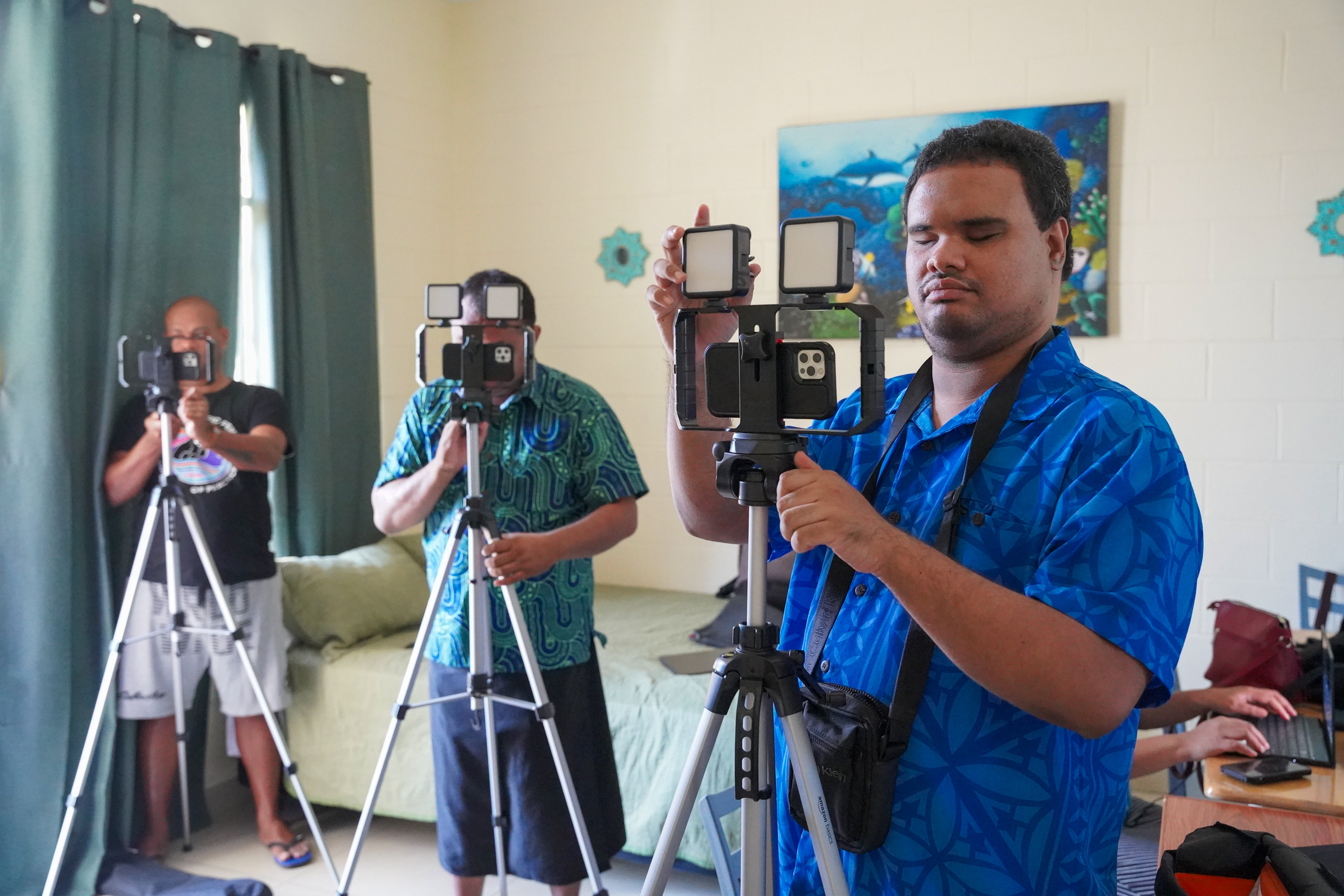
News
Capturing Vision Through Sound and Touch
Disability Justice Project Fellows Harness iPhone Technology to Spotlight Climate Crisis in the Pacific
September 11, 2024
Last year, the Disability Justice Project (DJP) trained Indigenous activists with disabilities from the Pacific on the iPhone camera to create a documentary series on disability and climate change. With VoiceOver, the iPhone provides image descriptions for blind and low-vision filmmakers and feedback on whether a subject is in focus. “If you think about it, it doesn’t make sense for a blind person to use a camera,” says DJP filmmaker Ari Hazelman. “The iPhone gives you more avenues to tell your story in a more profound way as a blind person.”
The Pacific region is among the most impacted in the world by climate change. Among its low-lying islands, there is no escape from the rising sea and no refuge from extreme weather events. Pacific activists are pushing for more inclusive warning systems for weather emergencies and more accessible evacuation centers. They want to be considered and involved in the creation of disaster mitigation and response plans. Indigenous Pacific Islanders with disabilities are also leading the way in sustainable land management and climate adaptation, offering valuable insights that can benefit us all.
Choose the viewing experience most accessible for you:
Closed Captions
American Sign Language/Closed Captions
Fijian Sign Language/Closed Captions
Audio Descriptions/Closed Captions
Open Captions
Descriptive Transcript
Closed Captions
American Sign Language/Closed Captions
Fijian Sign Language/Closed Captions
Audio Descriptions
Open Captions
Descriptive Transcript
Click here for a link to a descriptive transcript.
Credits:
Director & Producer
Jody Santos
Producers: Ari Hazelman | Sa Utailesolo | Faaolo Utumapu-Utailesolo
Videographers: Ari Hazelman | Des LaFave | Isoa Nabainivalu | Ruby Nabetari |
Sophia Paffenroth | Sa Utailesolo | Melvina Voua
Editor
Des LaFave
Sound Mixing
Billy Wirasnik
Colorist
Justin Poirier
News From the Global Frontlines of Disability Justice
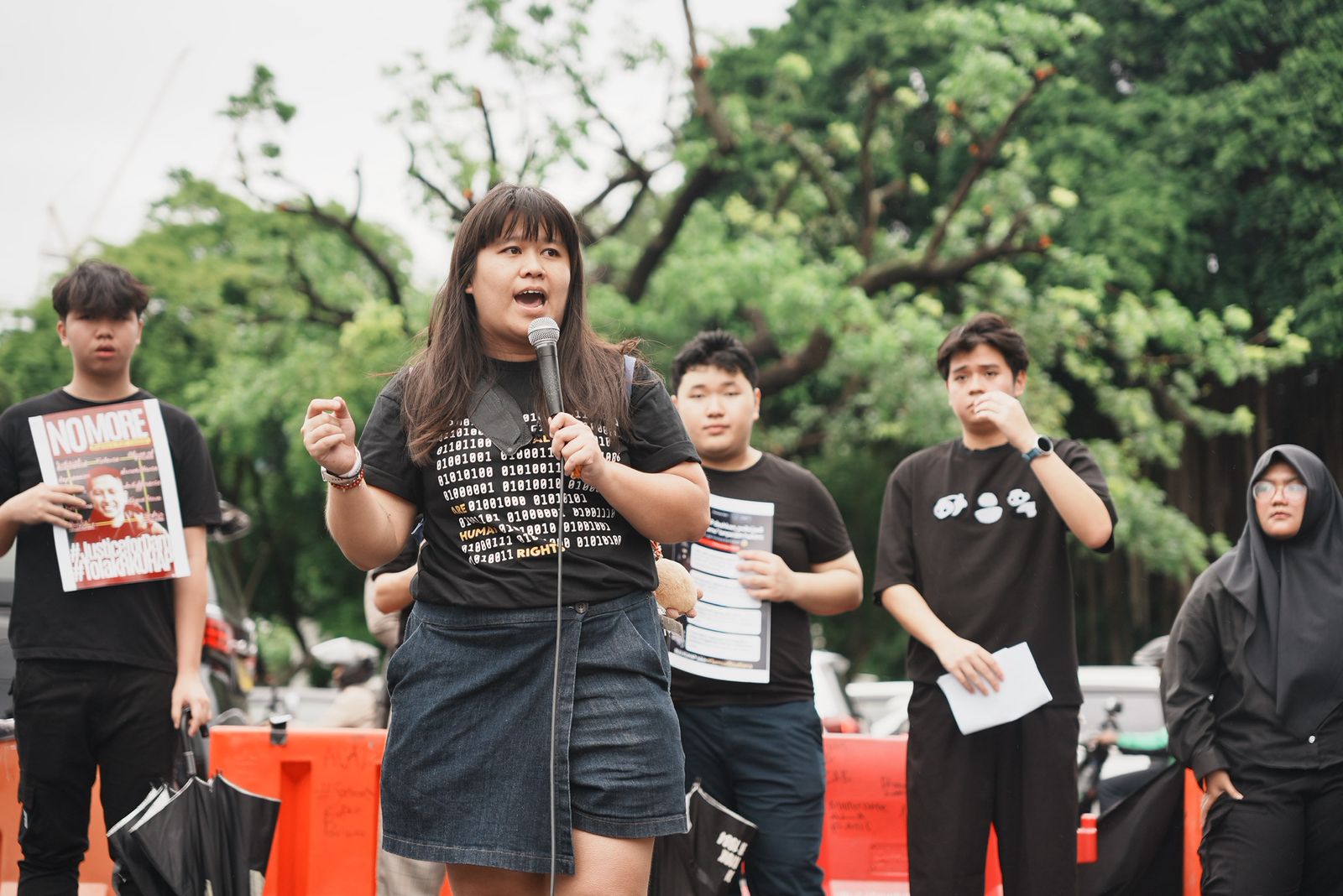
Disability and Due Process
As Indonesia overhauls its criminal code, disability rights advocates say long-standing barriers are being reinforced rather than removed. Nena Hutahaean, a lawyer and activist, warns the new code treats disability through a charitable lens rather than as a matter of rights. “Persons with disabilities aren’t supported to be independent and empowered,” she says. “… They’re considered incapable.”

Disability in a Time of War
Ukraine’s long-standing system of institutionalizing children with disabilities has only worsened under the pressures of war. While some facilities received funding to rebuild, children with the highest support needs were left in overcrowded, understaffed institutions where neglect deepened as the conflict escalated. “The war brought incredibly immediate, visceral dangers for this population,” says DRI’s Eric Rosenthal. “Once the war hit, they were immediately left behind.”

The Language Gap
More than a year after the launch of Rwanda’s Sign Language Dictionary, Deaf communities are still waiting for the government to make it official. Without Cabinet recognition, communication in classrooms, hospitals, and courts remains inconsistent. “In the hospital, we still write down symptoms or point to pictures,” says Jannat Umuhoza. “If doctors used sign language from the dictionary, I would feel safe and understood.”
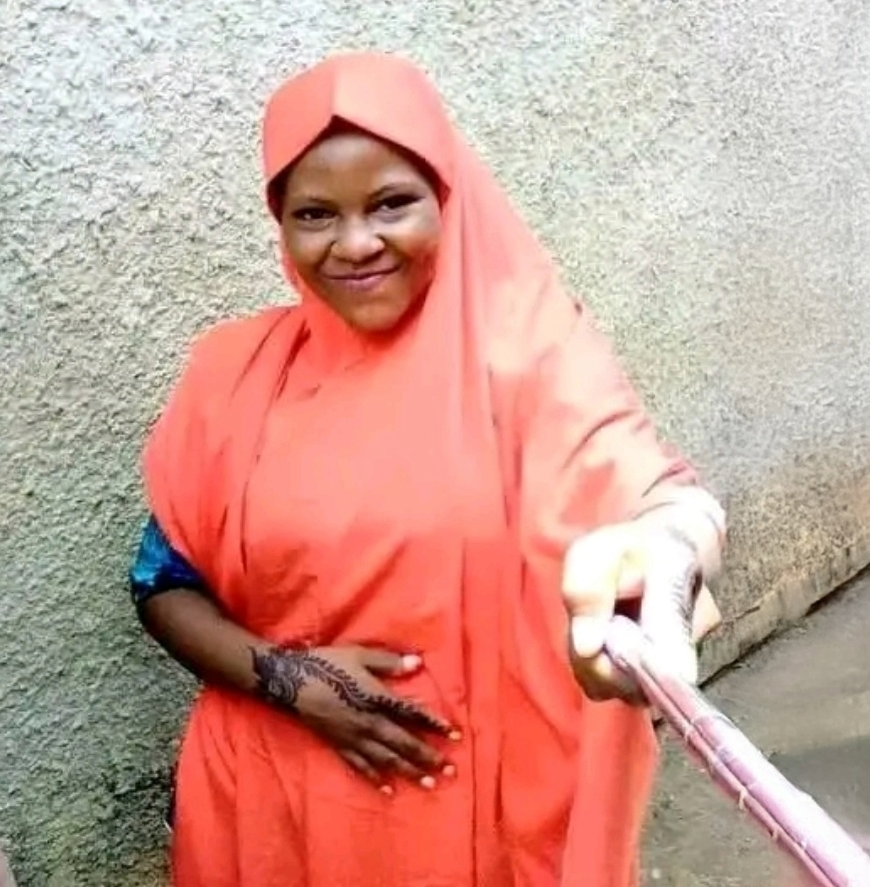
Failure to Inform
Zulaihatu Abdullahi dreamed of finishing school and building a home of her own. But at 19, she died of untreated kidney disease because no one could communicate with her in sign language. Her story reveals how Deaf Nigerian women are often left without lifesaving care. “If only she had access to healthcare where someone could guide her… explain each step, she might still be here,” says Hellen Beyioku-Alase, founder and president of the Deaf Women Aloud Initiative.
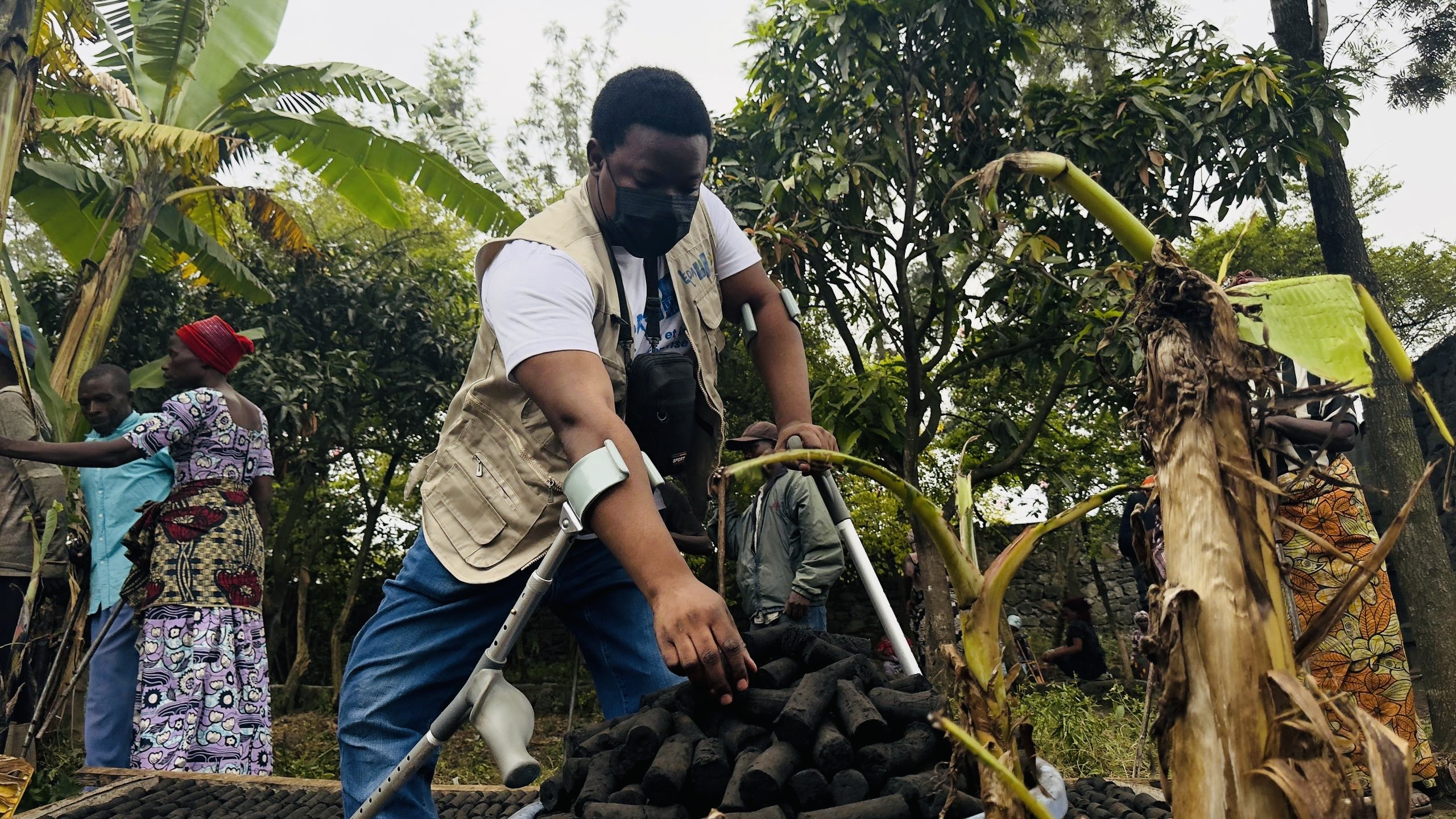
Disability in the Crossfire
In Goma, Democratic Republic of Congo, ongoing conflict and forced displacement have hit people with disabilities hardest. Rebel groups seized supplies from a clean cooking initiative designed to support displaced people with disabilities, leaving many trapped without aid. “It is still a big difficulty for authorities or government or humanitarian organizations to make a good decision which includes everyone,” says Sylvain Obedi of Enable the Disable Action.
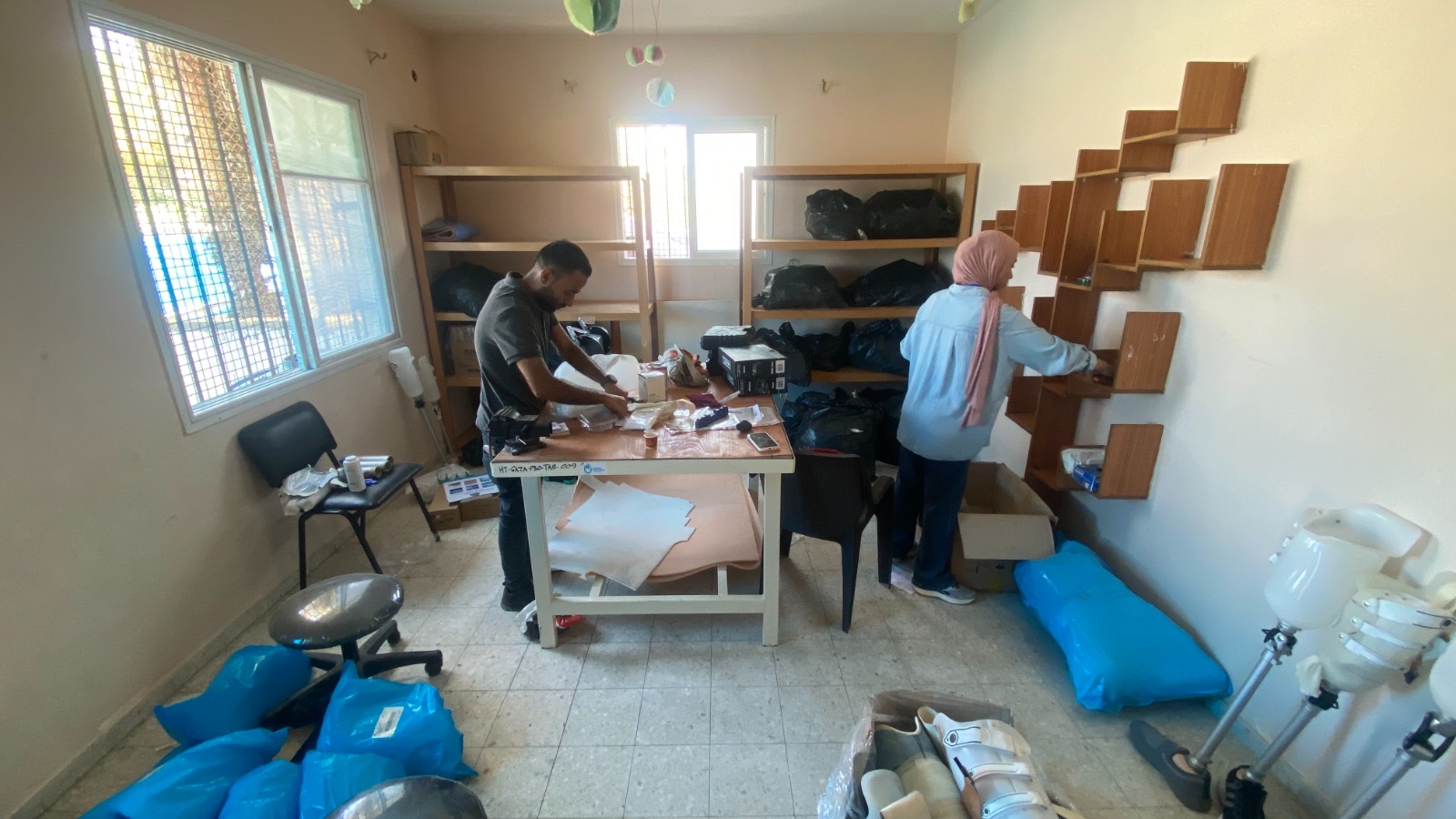
Gaza’s Amputees
At the Nahla Prosthetics & Orthotics Center in Gaza, staff wake up each day wondering if it’s safe to open before treating a handful of people in need of new limbs, adjustments, or psychosocial support. With famine declared in Gaza City and aid restricted, the center faces mounting shortages of materials and trained technicians. “Our colleagues call the situation a nightmare with no end,” says Zaid Amali, Humanity & Inclusion’s senior advocacy officer in Palestine.